第19章 LEAF-CLIMBERS(7)
Maurandia Barclayana.--A thin, slightly bowed shoot made two revolutions, following the sun, each in 3 hrs.17 min.; on the previous day this same shoot revolved in an opposite direction.The shoots do not twine spirally, but climb excellently by the aid of their young and sensitive petioles.These petioles, when lightly rubbed, move after a considerable interval of time, and subsequently become straight again.A loop of thread weighing 0.125th of a grain caused them to bend.
Maurandia semperflorens.--This freely growing species climbs exactly like the last, by the aid of its sensitive petioles.A young internode made two circles, each in 1 hr.46 mm.; so that it moved almost twice as rapidly as the last species.The internodes are not in the least sensitive to a touch or pressure.I mention this because they are sensitive in a closely allied genus, namely, Lophospermum.The present species is unique in one respect.Mohl asserts (p.45) that "the flower-peduncles, as well as the petioles, wind like tendrils;" but he classes as tendrils such objects as the spiral flower-stalks of the Vallisneria.This remark, and the fact of the flower-peduncles being decidedly flexuous, led me carefully to examine them.They never act as true tendrils; I repeatedly placed thin sticks in contact with young and old peduncles, and I allowed nine vigorous plants to grow through an entangled mass of branches;but in no one instance did they bend round any object.It is indeed in the highest degree improbable that this should occur, for they are generally developed on branches which have already securely clasped a support by the petioles of their leaves; and when borne on a free depending branch, they are not produced by the terminal portion of the internode which alone has the power of revolving; so that they could be brought only by accident into contact with any neighbouring object.Nevertheless (and this is the remarkable fact) the flower-peduncles, whilst young, exhibit feeble revolving powers, and are slightly sensitive to a touch.Having selected some stems which had firmly clasped a stick by their petioles, and having placed a bell-glass over them, I traced the movements of the young flower-peduncles.The tracing generally formed a short and extremely irregular line, with little loops in its course.A young peduncle 1.5 inch in length was carefully observed during a whole day, and it made four and a half narrow, vertical, irregular, and short ellipses--each at an average rate of about 2 hrs.25 m.An adjoining peduncle described during the same time similar, though fewer, ellipses.As the plant had occupied for some time exactly the same position, these movements could not be attributed to any change in the action of the light.Peduncles, old enough for the coloured petals to be just visible, do not move.With respect to irritability, I rubbed two young peduncles (1.5 inch in length) a few times very lightly with a thin twig; one was rubbed on the upper, and the other on the lower side, and they became in between 4 hrs.and 5 hrs.distinctly bowed towards these sides; in 24 hrs.subsequently, they straightened themselves.Next day they were rubbed on the opposite sides, and they became perceptibly curved towards these sides.Two other and younger peduncles (three-fourths of an inch in length) were lightly rubbed on their adjoining sides, and they became so much curved towards one another, that the arcs of the bows stood at nearly right angles to their previous direction; and this was the greatest movement seen by me.Subsequently they straightened themselves.
Other peduncles, so young as to be only three-tenths of an inch in length, became curved when rubbed.On the other hand, peduncles above 1.5 inch in length required to be rubbed two or three times, and then became only just perceptibly bowed.Loops of thread suspended on the peduncles produced no effect; loops of string, however, weighing 0.82 and 1.64 of a grain sometimes caused a slight curvature; but they were never closely clasped, as were the far lighter loops of thread by the petioles.
In the nine vigorous plants observed by me, it is certain that neither the slight spontaneous movements nor the slight sensitiveness of the flower-peduncles aided the plants in climbing.If any member of the Scrophulariaceae had possessed tendrils produced by the modification of flower-peduncles, I should have thought that this species of Maurandia had perhaps retained a useless or rudimentary vestige of a former habit; but this view cannot be maintained.We may suspect that, owing to the principle of correlation, the power of movement has been transferred to the flower-peduncles from the young internodes, and sensitiveness from the young petioles.But to whatever cause these capacities are due, the case is interesting;for, by a little increase in power through natural selection, they might easily have been rendered as useful to the plant in climbing, as are the flower-peduncles (hereafter to be described) of Vitis or Cardiospermum.